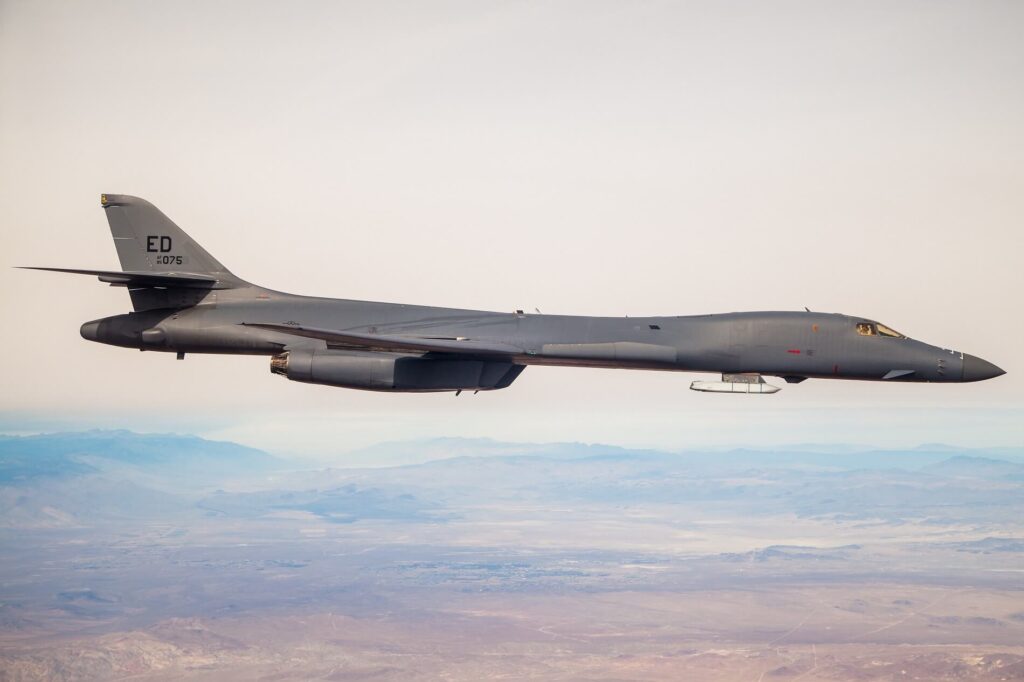A B-1B Lancer strategic bomber of the United States Air Force successfully passed a captive-carry test of a hypersonic weapon.
The test, which took place at Edwards Air Force Base, California, involved a B-1B of the 412th Test Wing carrying an inert AGM-158 Joint Air-to-Surface Standoff Missile under an external pylon, demonstrating the bomber’s external carriage capabilities. The next phase of the demonstration should be an external weapons release, a first in over 30 years for the aircraft.
Initially, the B-1B Lancer was intended to carry out nuclear penetration missions. Since the fall of the USSR, however, its capabilities were re-oriented towards conventional payloads, making use solely of its internal weapon bays. The reversal to external hardpoints, as well as the merging of the two forward bays, are meant to give the bomber the potential to employ hypersonic weapons in the future.
“Adapting a small number of our healthiest B-1s to carry hypersonic weapons is vital to bridge between the bomber force we have today, to the force of tomorrow,” said General Tim Ray, Commander of the Air Force Global Strike Command. “This is a major step forward in our global precision fires capability and it is important we pursue these technologies to remain ahead of our competitors.”
In the last few years, hypersonic weapons have become a priority for the United States military with the emergence of similar platforms in the arsenals of other world powers, such as the Russian Zircon and Kinzhal missiles or the Chinese DF-ZF. In May 2020, a Russian military source announced that a new hypersonic anti-ship missile, most likely a variant of the Kh-47М2 Kinzhal missile, had been successfully tested from a Tu-22M3M strategic bomber.
